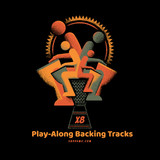Drum Brushes Aren't Just for the Jazz Scene
There’s a certain vibe that can only come from jazz drumming: laid back, cool, maybe a little crazy, but in a different way than those other “crazy” styles of drumming. When most people picture jazz drumming, images of a sunglasses-clad drummer nodding away to a backbeat are pretty common. That backbeat itself is laid-back, cool… and a little different, too… especially when you realize that crazy cat drummer is using a brush instead of a drum stick on their hi-hat or swishing it around on their snare.
Brushes aren’t just for jazz drumming, however, and when you bring a brush into your drumming, you’re about to be a lot cooler than you started out being. Because, brushes are pretty slick, in a raspy kind of way.
Drum brushes (or brooms) are most often used in softer music styles or songs, which is why they work so well in jazz music. That doesn’t mean a jazz drummer gets to have all of the fun, or is limited to only using brushes. It’s a matter of volume, sound texture and technique that brings drum brushes into our favorite grooves.
Cymbals get a lot of play from brushes, whether on a crash, splash or open hi-hat. Depending on the type of brush you use, you can bring out some of the more interesting cymbal tones that are hard (if not impossible) to access with a drum stick. Metal brushes, for instance, essentially scrape metal against metal, coaxing out different vibrations from the cymbals that add more tonal interest and resonance.
When it comes to brushes on a snare drum or tom, you get a different experience and sound… you’re “painting” a beat on your drums and that action gives your drum a smooth, “static” sound with a pulse. There are different methods for the “swish” you do with brushes, some drummers are all about circles over the drum head, while others use a “figure eight” pattern. You can also use the brushes to hit the drums like you would with sticks for a more muted effect.
As long as your drum heads have a protective coating, any type of brush should work without causing damage. One exception to this is any sort of natural skin drum, like bongos or congas. Plenty of Latin jazz or Latin music uses drum brushes for their instruments, but, it is recommended that when playing bongos, congas or a djembe drum with a brush, use the nylon variety so that your natural skin drum head isn’t damaged.
Of course, you can always go for the sturdiest drum of all – the cajon. Cajon drums are quickly becoming replacements for acoustic drum sets because of their multi-functionality. You have to admit that the cajon drum’s sturdier surface makes it an exceptional drum for brushes. You can use typical drum brushes or a special cajon drum brush that helps increase volume, especially with the painting/scraping sound.
Drum brushes may reduce your impact and volume, but, they also offer a way of layering sound and drawing out the nuances of your favorite drums and cymbals. Whether you’re into the jazz scene, or just ready to take a chance on some new sounds, drum brushes bask in the glow of the classics while giving you the opportunity to create a new following for yourself… and your slick beat.
Recent Posts
-
X8 Drums Play-Along Backing Tracks
The new X8 Play-Along Series is being produced for our musician friends wanting a fresh way to work …9th Feb 2025 -
What is the Best Size Djembe for Beginners?
If you're new to the world of percussion and interested in learning the djembe, you're in for a t …16th Jul 2024 -
The Benefits of Becoming a Drumming Teacher: Transforming Passion into Profession
Why become a drumming teacher? Becoming a drumming teacher is an excellent way to share your pas …22nd May 2024



